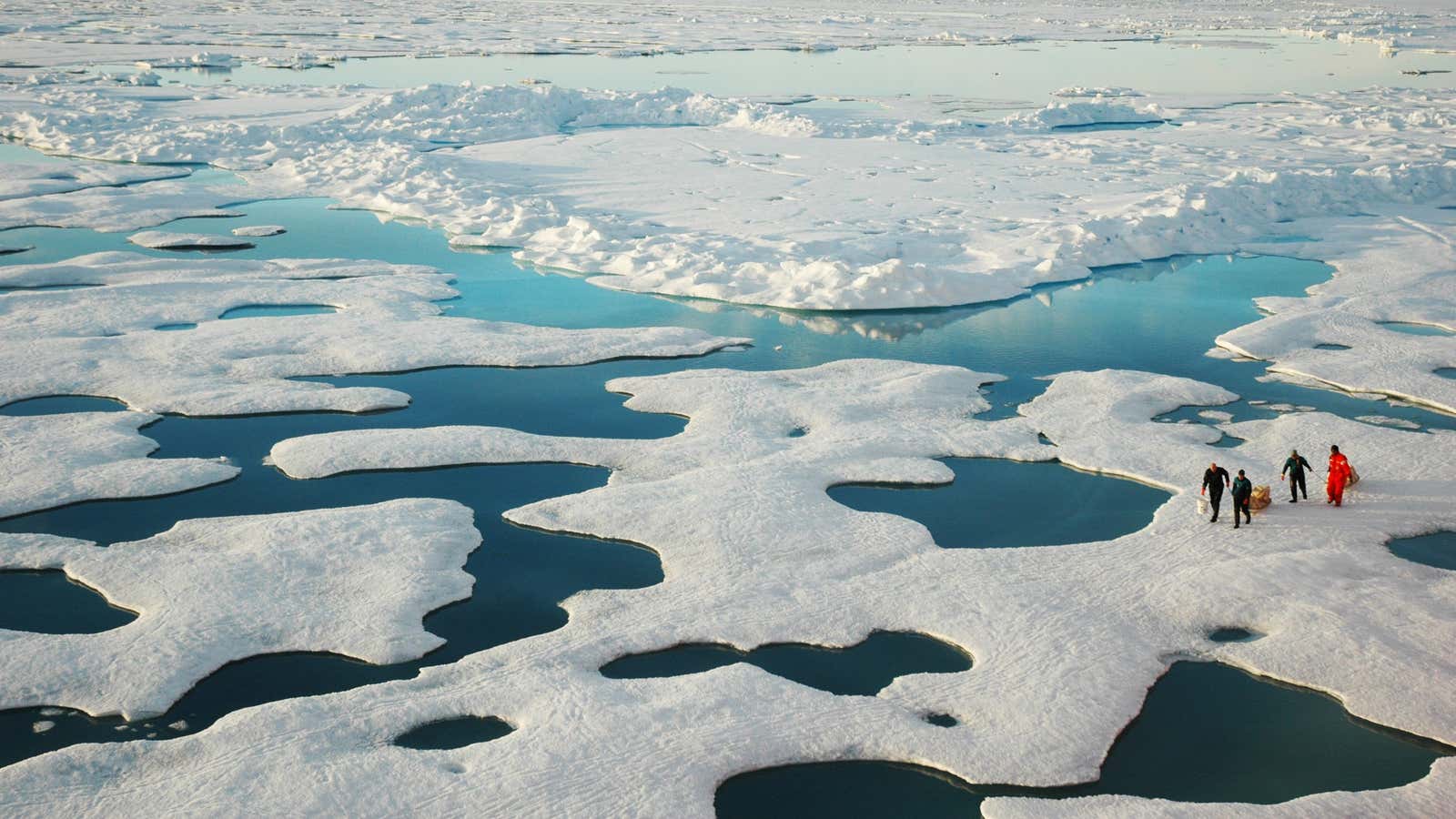Santa may soon be a climate refugee: the ice around the North Pole is melting, leaving his workshop on thin ice.
Since Dec. 20, the Arctic has lost 238,000 sq km (91,900 sq mi) of ice, according to preliminary data published by the National Snow and Ice Data Center. That’s an area about equal to that of the UK.
Temperatures on a scientific buoy in the Arctic showed the area around the North Pole was at the freezing point on Dec. 22, an unseasonably warm anomaly attributed to a storm east of Greenland pushing warmer air towards the Pole.
There has only been one other occasion since 1958 where temperatures have risen this sharply in the Arctic, according to the Washington Post. It was last month.
Since the National Snow and Ice Data Center started publishing data in October 1978, there have been only six other three-day periods during the winter months where the Arctic ice is supposed to grow that have seen a more rapid of a decline in ice. The last was in January, 2012.
The 174,000 sq km (about half the size of Germany) one-day drop recorded yesterday is the largest one-day drop during ice-expanding months since October 2007 and the seventh largest on record.
This week’s melt follows a decades-long trend of Arctic ice growing younger and thinner as explained by this video from NOAA. Where arctic was once full of decades-old ice formations, seasonal ice has now become the norm.
